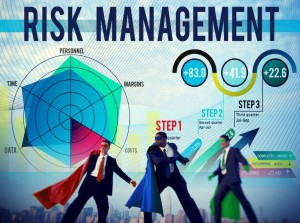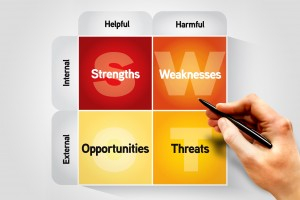
 Data Structure
Data Structure Networking
Networking RDBMS
RDBMS Operating System
Operating System Java
Java MS Excel
MS Excel iOS
iOS HTML
HTML CSS
CSS Android
Android Python
Python C Programming
C Programming C++
C++ C#
C# MongoDB
MongoDB MySQL
MySQL Javascript
Javascript PHP
PHP
- Selected Reading
- UPSC IAS Exams Notes
- Developer's Best Practices
- Questions and Answers
- Effective Resume Writing
- HR Interview Questions
- Computer Glossary
- Who is Who
Useful Techniques To Identify Your Project Risk
Before starting a long journey on your car, isn’t it a general practice to check all the vital components of it? Most of us do check the conditions of important parts like tyres, oil levels, lights, mirrors etc to ensure that they are running in good conditions. But, what is the necessity of doing that? That’s because we want to ensure that at least we will not face any problem on the way just because of our carelessness. But the uncertainty is still there, you never know when any unexpected events left you high and dry on a lonely highway.

You never know when the uncertain events take place, but it is wiser to speculate the probable events and plan that accordingly. And when planning, mere speculation is just not enough. You need to cautiously identify the potential issues with proper tools and techniques for a better risk response plan. For example, while going on a long journey, it’s better to inquire whether you will get gas stations, restaurants etc on the way. Otherwise carry gas can, food items etc which can be used when required.
Similarly, while initiating a project, you need to identify which risk may affect the project and plan beforehand for a smooth sailing. Let’s see the various tools and techniques to identify the risk.
Tools and Techniques to Identify Risk
It is always better to use the already proven tools and techniques while identifying the risk, because the risks are uncertain events or conditions which may or may not occur in our project life cycle, but when occurs, it is difficult to manage them without a proper risk response plan. So, use of proper tools and techniques increases the rate of finding the actual risks.
Let’s discuss some of those tools and techniques which are also suggested in PMBOK.
Brainstorming
It is an information gathering technique where the team and the experts sits together to list out all the probable project risks. A facilitator leads the discussions, lists the ideas about project risk generated from all the participants. Once the risks are identified, they categorize all the listed risk with proper ranking and definitions.

The primary focus of these brainstorming sessions is to generate more ideas about the project risks from the team as well as the experts in that field who can anticipate probable risk based on their experiences while working on similar kind of projects earlier.
If the risk is complex one, then that can be broken into smaller parts and generate ideas for the smaller one. All those risks are then categorized in different scales such as low, medium, high etc based on the nature.
Delphi Technique
In Brainstorming, you may not get a consensus view among the experts, they may vary in their opinions. So another technique called Delphi technique which is used to get consensus views. The project risk expert takes part anonymously in this information gathering technique. The facilitator distributes a questionnaire asking the experts on important project risks. After receiving the responses, the facilitator summarized all the responses and redistributes for further comments from the experts.
After a few rounds of this process, a consensus is prevailed. This technique reduces the influence of any one person on the outcome as well as removes the chances of favoritism in the data.
SWOT Analysis

The acronym of SWOT is Strengths, Weakness, Opportunities and Threats. This is commonly used technique to identify risks by analyzing the internal factors (Strengths and Weakness) and external factors (Opportunities and Threats).
To use this technique we need to do an assessment on the four areas- SWOT.
- Strengths − The team should list down all the internal strengths they have to achieve the project goals. The required knowledge and skills they have should be listed as an advantage, along with any special skills if any of the team member poses which is require for the project. Taking those strengths, create a plan to leverage them on achieving project goals.
- Weakness − Weaknesses are the obstacles that comes on the way to achieve project objectives whether from the organizations or the project. The team should list down all such weaknesses which may create hurdles while meeting the project’s objectives and make a plan to minimize their impacts.
- Opportunities − The external factors or situation which can be played as a positive factor to achieve the project goals. The team should list down such opportunities to leverage them when required.
- Threats − List down all the external negative factors which can endanger the project when occurs.
The SWOT analysis helps to identify any opportunities for the project that comes from the strengths, and any threats comes up from the weaknesses. Also, helps to analyze how and up to what extent the strengths can able to neutralize the threats.
Diagramming Techniques
Diagrams and flowcharts can be used in the risk identification process. Some of those techniques are as follows.
- Fish Bone Diagrams − The fish-bone diagram or Ishikawa diagram also called cause and effect diagram is used to identify the root cause of the risks. The diagram shows the main causes and sub-causes of a problem in a pictorial diagram just like a fish with its bones.
- Flow Charts − Flow charts are necessary to graphically represent the interrelation of the system or processes, which enables the team to understand the mechanism effectively to foresee any risk which may occur in the system or processes.
- Influence Diagrams − Graphical representations of events which are influencing on a cause, events are ordered based on the time and other variables and outcome.
There are other techniques such as Checklist analysis, Assumption analysis, Document reviews which can be used to identify the project risks.
Identification of risk is an important steps in project initiation. It is difficult to mitigate the risk when it occurs if not identified it before. So, it’s better to identify the risks using all the useful tools and techniques to save your project falling victims of any unexpected situation.

